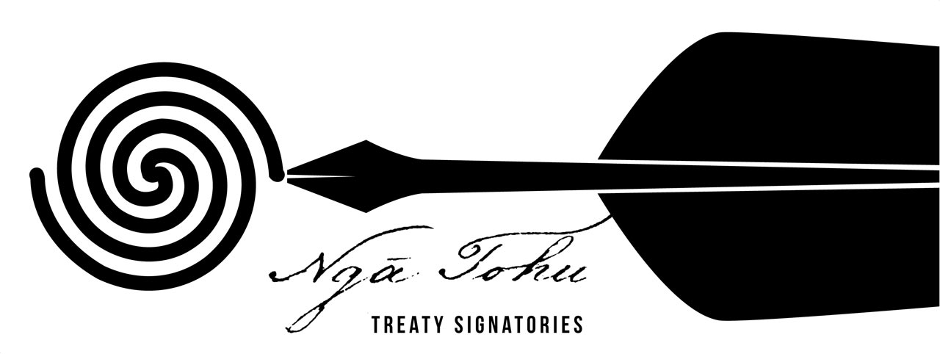Signing
| Signature | Sheet | Signed as | Probable name | Tribe | Hapū | Signing Occasion |
|---|---|---|---|---|---|---|
| 67 | Sheet 1 — The Waitangi Sheet | Pokai | Riwhitete Pōkai | Ngāpuhi | Ngāti Rāhiri | Waitangi 6 February 1840 |
Ngāpuhi chief Riwhitete Pōkai was aged about 20 when he signed the Treaty of Waitangi on 6 February 1840. Historian T. Lindsay Buick described him as ‘a handsome and important personage ... [who] by virtue of his aristocratic birth, was entitled to sign the treaty’. [1]
Pōkai was fully trained in the use of both traditional Māori weapons and European firearms, and was said to be the fastest runner of his tribe. His first battle was an encounter with Rarawa at Ōruru in 1843.
By 1845 Pōkai had become a trusted lieutenant of his relative Hōne Heke Pōkai. He led one of the three war parties which attacked the British flagstaff at Kororāreka (later called Russell) on 11 March. He carried a flintlock musket and had a short-handled tomahawk in his belt. After cutting down the flagstaff, he led his men into the battle on the beach against British bluejackets (marines) and soldiers.
He later told historian James Cowan how angry Ngāpuhi were when the town was shelled by British naval ships: ‘We treated the women and children kindly … and took those of them who remained late off to the ships in our canoes. But as soon as all the refugees were on board – and even before that – the man-of-war set to and opened fire on our people on the beach. It was an act of treachery to shell us after the town had been given up to us by the whites. When the firing began some of us were sorry we had not tomahawked all the pakehas we could find.’ [2]
Pōkai received two bayonet wounds in the battle at Puketutu in May 1845. These injuries were usually treated by bathing the wound with the boiled juice of flax root and then filling it with a dressing of clay. Pōkai recovered enough to fight in the later battles at Ōmāpere and Ruapekapeka. He survived into the 20th century, when Cowan met him and described him as ‘a splendid specimen of the warriors of Ngapuhi’. [3]
Riwhitete Pōkai died at his home in Kaikohe in 1903, aged about 85. To his last days he remained fond of instructing the young men of Ngāpuhi in the art of war. His rifle and muskets were always ready for use and he is said to have slept with one ear awake. ‘At any unusual noise in or near his room he would leap from his bed and lunge out fiercely with his weapon in the darkness at his imaginary enemy.’ [4]
[1] T. Lindsay Buick, The Treaty of Waitangi: or, how New Zealand became a British colony, Mackay, Wellington, 1914, p. 158
[2] Quoted in James Cowan, The New Zealand wars: a history of the Maori campaigns and the pioneering period, vol. 1, Government Printer, Wellington, 1922, p. 32, http://nzetc.victoria.ac.nz/tm/scholarly/tei-Cow01NewZ-c4.html
[3] New Zealand wars, p. 46, http://authority.nzetc.org/tm/scholarly/tei-Cow01NewZ-c6.html
[4] New Zealand wars, p. 48, http://authority.nzetc.org/tm/scholarly/tei-Cow01NewZ-c6.html


Community contributions